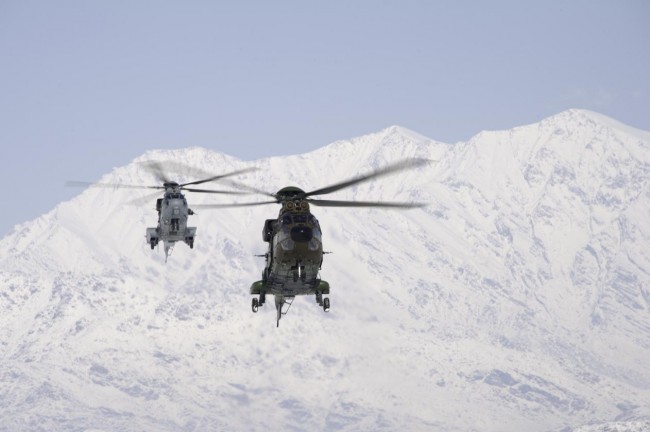The decline in defense spending in Europe quantified

(BRUSSELS2) A few weeks before the NATO summit in Chicago, I took a closer look at the evolution of the budgets of the European member countries of the Alliance. According to the latest statistics, all European budgets thus reached, for the year 2011, 258 billion $, or about 186 billion euros (according to the exchange rate chosen by the Alliance).
Only one country on the rise: Luxembourg
The effect of budgetary restrictions was fully felt in 2011. Few States seem to have been spared. Only Luxembourg (+3,7%), Estonia (+7,6%) and Latvia (+4,6%), and more, surprisingly, Romania (+1,2%) stand out at the level positive. And again, this increase must be put into perspective. It should be noted that all these countries have a small budget in mass, any additional purchase has a large effect in %. Above all, apart from Luxembourg, we observe a catch-up effect rather than a real increase. It should indeed be noted that all the countries suffered a significant drop in previous years: -12,5% and -2,5% in Estonia; -37,7% and -17,7% in Latvia; -13,8% and -7,8% in Romania). In the other countries, we are in quasi-stability, either positive: Poland (+0,2%), Norway (+0,5%) or Croatia (+0,8%); either negative: the United Kingdom (-0,7%) (*) or Belgium (-0,9%).
The tumble
While a few countries are limiting the drop in spending: Germany with -1,5%; and lower France (*), Hungary and Italy at (-3,2%), elsewhere it is plummeting. A few countries are around -5-7%; countries in economic difficulty: Portugal (-7,7%) and others which are in a better situation (a priori) but have chosen to restrict certain expenditure, in particular that of Defense Denmark (-7,6%), the Netherlands (-4,9%).
Half a dozen countries crossed the 10-point drop mark, illustrating a more than difficult economic situation: - 11% in Spain, -12% in Slovakia, - 15% in the Czech Republic, -17% in Bulgaria, - 18 % in Slovenia, -24% in Greece. Greece which has "lost" a third of its budget in three years, going from 7,3 billion euros in 2009 to almost 6 billion in 2010 and 4,6 billion in 2011!
(*) It may be noted that this assessment would be more negative - if the operation in Libya did not take place - and "forced" certain countries such as France or the United Kingdom to incur certain additional operating expenses.Outside the EU, the American fact
In NATO member countries - which are not EU members - Canada and Turkey continue to increase their spending (+3,7% and +3,8% respectively), while the United States decreases their expenses significantly (-8,3%); a drop that is all the more notable in that it interrupts a cycle of constant budget increases that began in the early 2000s.
NB: The miracle of exchange rates. Pay attention to figures and conversions in $ - the reference currency used by NATO statisticians - which can be misleading, particularly for countries in the euro zone. Thus the French defense budget fell between 2010 and 2011 by a little less than one billion euros (from 39,2 to 38,4 billion) while it increased in dollars and the current exchange rate by one good billion $. (from almost $52 billion to $54,4 billion)!
Troop volume decreases
The volume of European troops is shrinking visibly: from almost 2,1 million soldiers in 2000 (*), it fell to around 1,5 million in 2011, i.e. - 70.000 people in one year from 2010 to 2011. And this decline is expected to continue in the coming years. It is effectively the abandonment of conscription first in France and in Italy then in Germany and in Poland which essentially fuel this decline. To speak of weakening would however be a bad summary, we can speak more of a balloon that deflates. These overstaffing are no longer justified on the ground but above all do not automatically allow significant efficiency.
It can however be noted that US troops, which had experienced a similar drop after the end of the Cold War, dropping from 2,1 million troops in 1990 to nearly 1,48 million in 2000, then remained almost stable, reaching 1,43 .2011 million soldiers in 2000. The workforce even rose in the second half of the 2007s, under the effect of the wars in Afghanistan and Iraq: the "low" point had been reached in 1,34, with XNUMX. XNUMX million soldiers before rising again.
(*) In the aftermath of the Cold War, (Western) Europeans alone had 2,7 million soldiers in 1990; therefore not counting the troops from Eastern Europe.


We have understood that it is about billions and not millions!
Although the article does not specify it, these statistics are only of interest if they are indeed expenses actually executed!
However, it should also be noted that these budgets do not all correspond to the same budget aggregates depending on the country and that some include the VAT portion of the contracts, which leads to having to bring serious caveats to these statistics which are only valid in comparisons of year after year, with identical calculations!
The remark relating to exchange rates is fundamental! Especially for States that buy their equipment in the USA!
Even if Greece has seen its budget collapse, the huge stock of armor given by the United States corresponds to a donation of at least 2 billion euros.